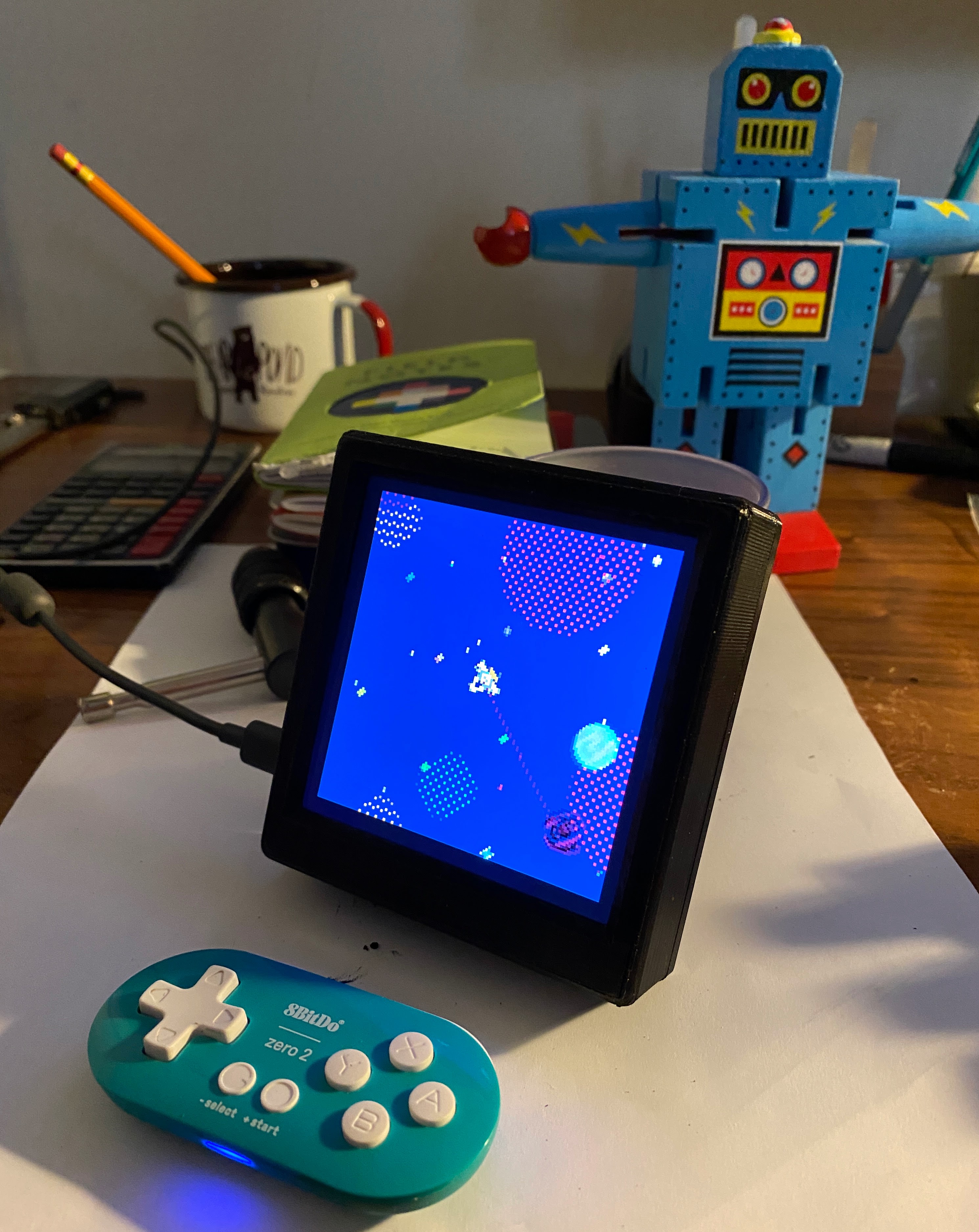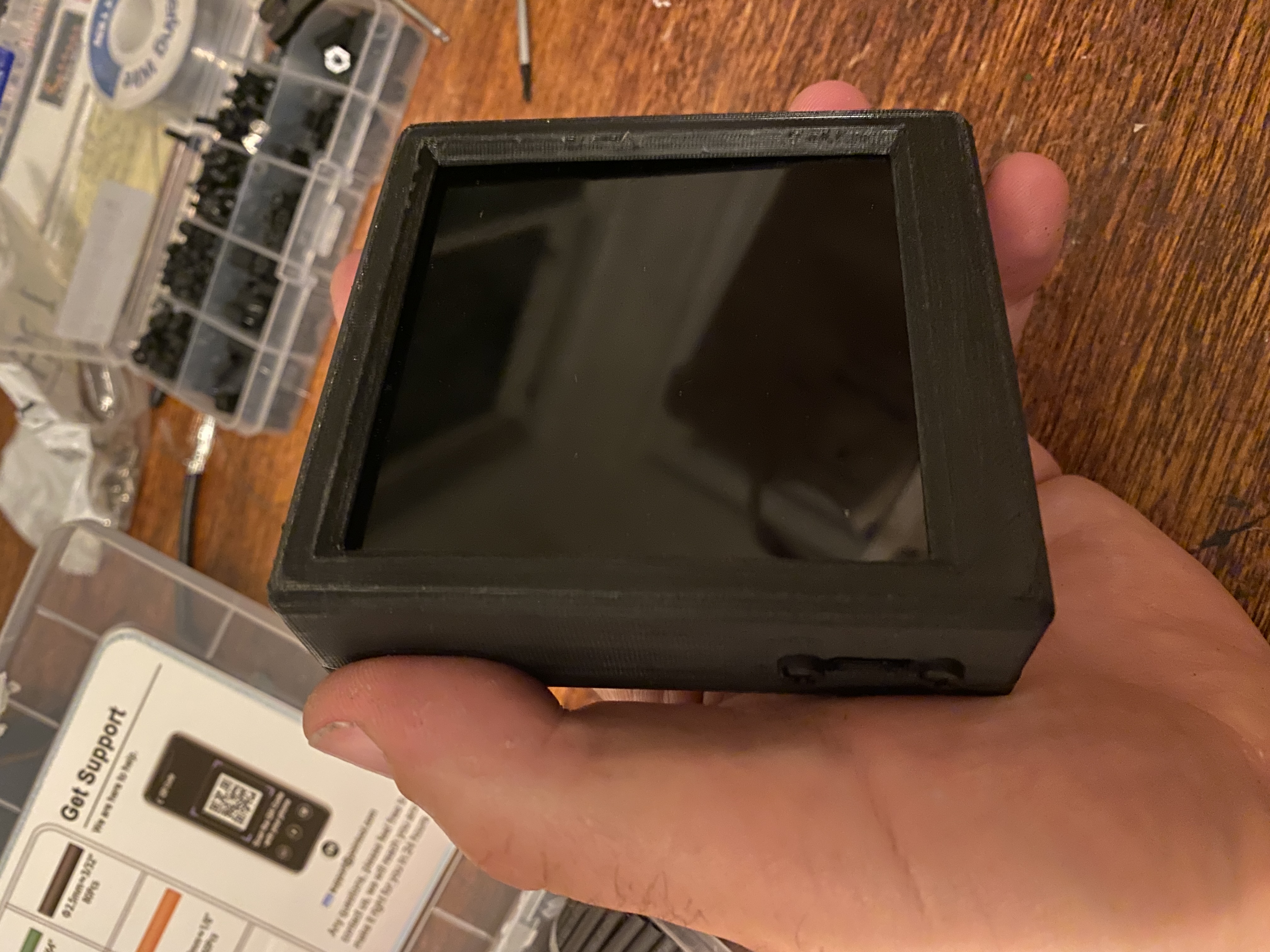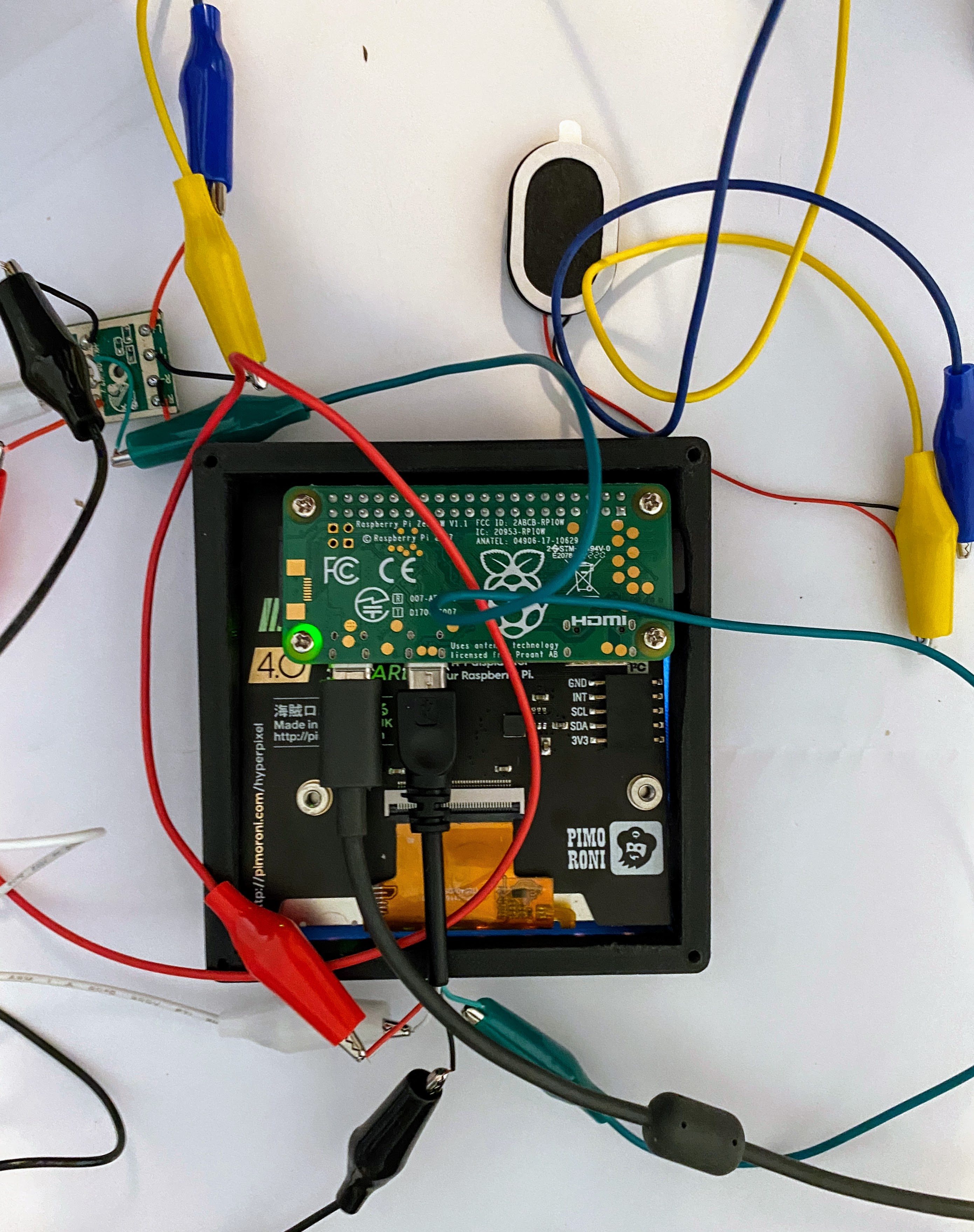For fun, I recently prototyped a little 'PICO-8 micro-console' (compact enclosure with a Raspberry Pi and square display that boots directly into SPLORE):

It's certainly less practical than commercial off-the-shelf handhelds that support PICO-8 -- it has no battery or keypad (you pair a bluetooth controller to it), but practical wasn't really the goal-- I wanted to build something designed around a high-quality square display.
For scale:

Internals being tested (Pi Zero W, Pimoroni Hyperpixel 720x720 screen (used pixel-perfect with 5x5 pixels and a minimal 40px black border), USB DAC -> speaker, etc):

I plan to make a smoother white enclosure, this was just a 3D printed first pass with a lot of hand-filing to get everything to fit and figure out hardware. Maybe some day I'll make an extended-case version with a custom PCB to add battery / charging / integrated buttons... but it's nice to call a prototype "done enough to use and share".

Doesn't that model pi chug pretty hard on more demanding pico games?

I thought that might be an issue, but I’ve played dozens of games with no issues so far…

It was my first time trying out a 'more modern' way to have something run on boot, systemd, and generally followed this process:
https://www.raspberrypi.org/documentation/linux/usage/systemd.md
where the 'service' is a one-line script that runs "pico-8/pico8 -splore -pixel_perfect 1"
[Please log in to post a comment]






